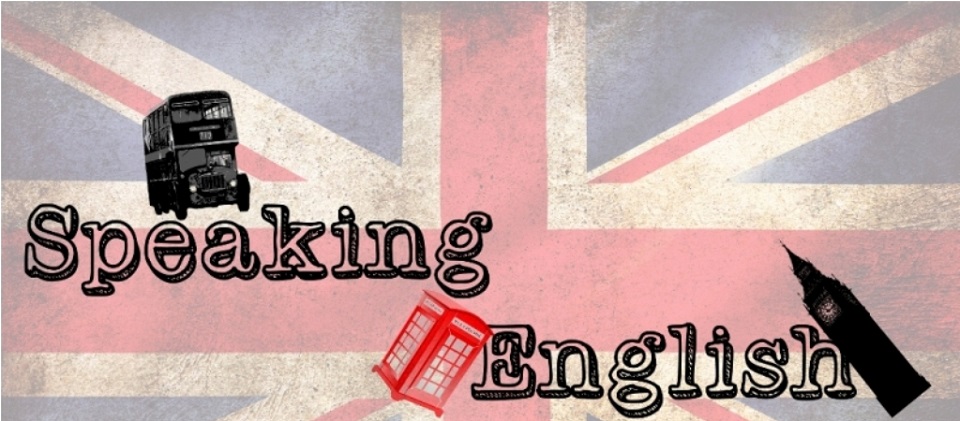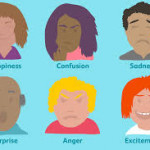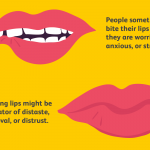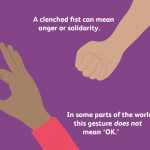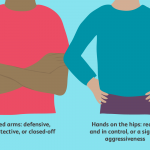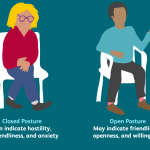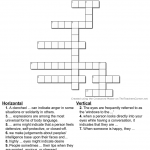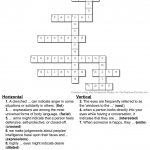By Stella Mastrogiannopoulou
Body language refers to the nonverbal signals that we use to communicate. According to researchers, these nonverbal signals make up a huge part of daily communication. It has been suggested that body language may account for between 60 to 65% of all communication. Do you want to be an expert at understanding the feelings and psychology of your interlocutor? Here’s what to look for when you’re trying to interpret body language.
- 1. Facial expressions.
Think for a moment about how much a person is able to transmit with just a facial expression. A smile can indicate approval or happiness. A frown can signal disapproval or unhappiness. In some cases, our facial expressions may reveal our true feelings about a particular situation. While you say that you are feeling fine, the look on your face may tell people otherwise. Furthermore, the expression on a person’s face can even help determine if we trust or believe what the individual is saying. One study found that the most trustworthy facial expression involved a slight raise of the eyebrows and a slight smile. This expression, the researchers suggested, conveys both friendliness and confidence. Facial expressions are also among the most universal forms of body language. The expressions used to convey fear, anger, sadness, and happiness are similar throughout the world. Research even suggests that we make judgments about people’s intelligence based upon their faces and expressions.
- 2. The eyes
The eyes are frequently referred to as the «windows to the soul» since they are capable of revealing a great deal about what a person is feeling or thinking. As you engage in conversation with another person, taking note of eye movements is a natural and important part of the communication process. For instance, when a person looks directly into your eyes while having a conversation, it indicates that they are interested and paying attention. However, prolonged eye contact can feel threatening. On the other hand, breaking eye contact and frequently looking away might indicate that the person is distracted, uncomfortable, or trying to conceal his or her real feelings.
- 3. The mouth.
The lips could also indicate how a person is feeling. Chewing on the bottom lip may show that the individual is experiencing feelings of worry, fear, or insecurity. Covering the mouth may be an effort to be polite if the person is yawning or coughing, but it may also be an attempt to cover up a frown of disapproval. In addition, smiling is perhaps one of the greatest body language signals, but smiles can also be interpreted in many ways. For example, a smile may be genuine, or it may be used to express false happiness, sarcasm, or even cynicism.
When evaluating body language, pay attention to the following mouth and lip signals:
Pursed lips. Tightening the lips might be an indicator of distaste, disapproval, or distrust.
Lip biting. People sometimes bite their lips when they are worried, anxious, or stressed.
Covering the mouth. When people want to hide an emotional reaction, they might cover their mouths in order to avoid displaying smiles or smirks.
Turned up or down. Slight changes in the mouth can also be subtle indicators of what a person is feeling. When the mouth is slightly turned up, it might mean that the person is feeling happy or optimistic. On the other hand, a slightly down-turned mouth can be an indicator of sadness, disapproval, or even an outright grimace.
- 4. Gestures
The following examples are just a few common gestures and their possible meanings:
A clenched fist can indicate anger in some situations or solidarity in others.
A thumbs up and thumbs down are often used as gestures of approval and disapproval.
The «okay» gesture, made by touching together the thumb and index finger in a circle while extending the other three fingers can be used to mean «okay» or «all right.»
The V sign, created by lifting the index and middle finger and separating them to create a V-shape, means peace or victory in some countries.
- 5. The Arms and Legs
When you are evaluating body language, pay attention to some of the following signals that the arms and legs may convey:
Crossed arms might indicate that a person feels defensive, self-protective, or closed-off.
Standing with hands placed on the hips can be an indication that a person is ready and in control, or it can also possibly be a sign of aggressiveness.
Clasping the hands behind the back might indicate that a person is feeling bored, anxious, or even angry.
Rapidly tapping fingers or fidgeting can be a sign that a person is bored, impatient, or frustrated.
Crossed legs can indicate that a person is feeling closed off or in need of privacy.
- 6. Posture
Posture can convey a wealth of information about how a person is feeling as well as hints about personality characteristics, such as whether a person is confident, open, or submissive. Sitting up straight, for example, may indicate that a person is focused and paying attention to what’s going on. Sitting with the body hunched forward, on the other hand, can imply that the person is bored or indifferent.
Open posture involves keeping the trunk of the body open and exposed. This type of posture indicates friendliness, openness, and willingness.
Closed posture involves hiding the trunk of the body often by hunching forward and keeping the arms and legs crossed. This type of posture can be an indicator of hostility, unfriendliness, and anxiety.
Understanding body language can go a long way toward helping you better communicate with others and interpreting what others might be trying to convey. While it may be tempting to pick apart signals one by one, it is important to look at these nonverbal signals in relation to verbal communication, other nonverbal signals, and the situation. You can also focus on learning more about how to improve your nonverbal communication to become better at letting people know what you are feeling—without even saying a word. So, next time you have a conversation with someone, try to notice some of the above and guess how the person is feeling!
Source: https://www.verywellmind.com/understand-body-language-and-facial-expressions-4147228
And now, here’s a quiz to see what you remember:
The answers:
The answers:
